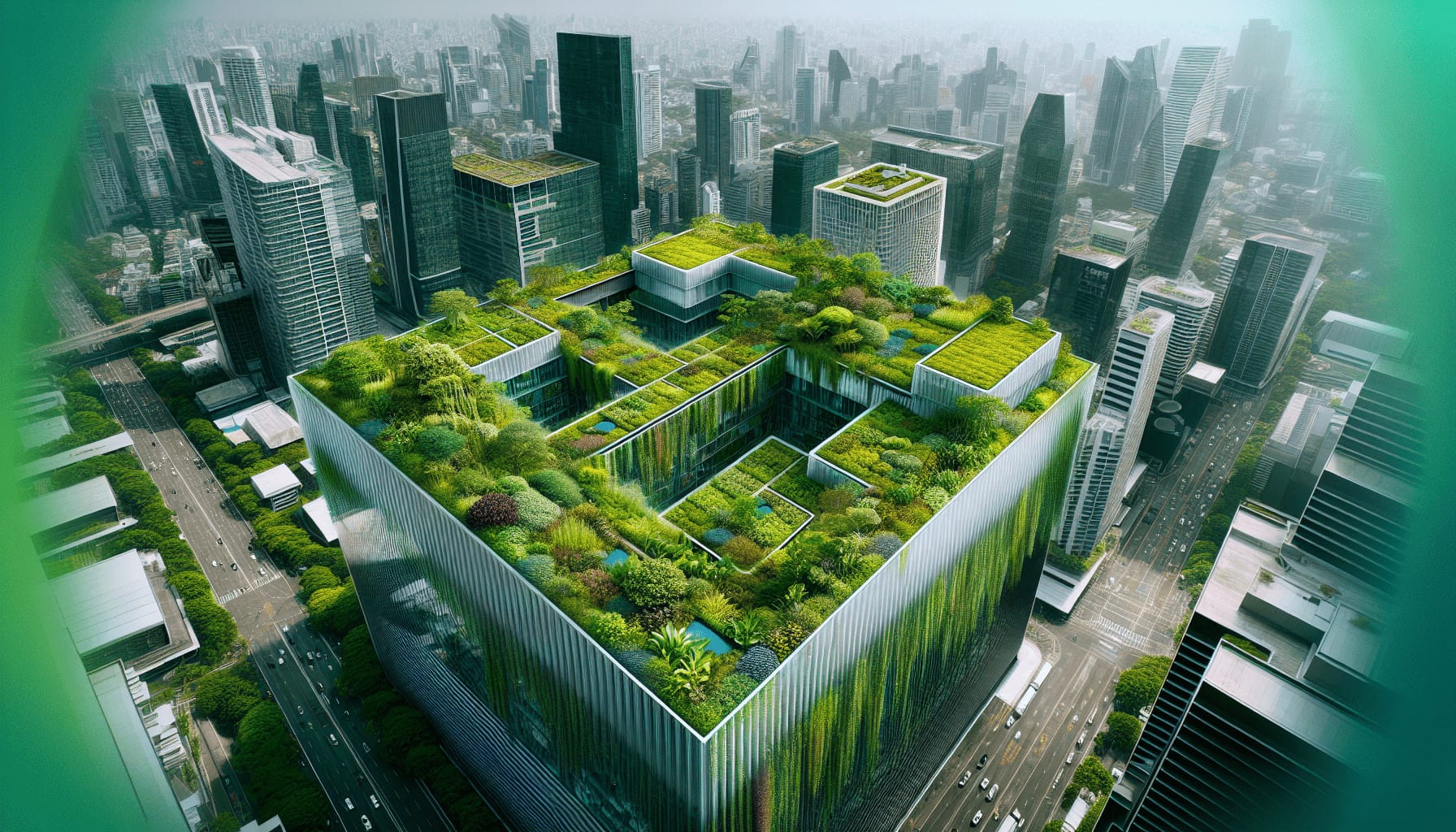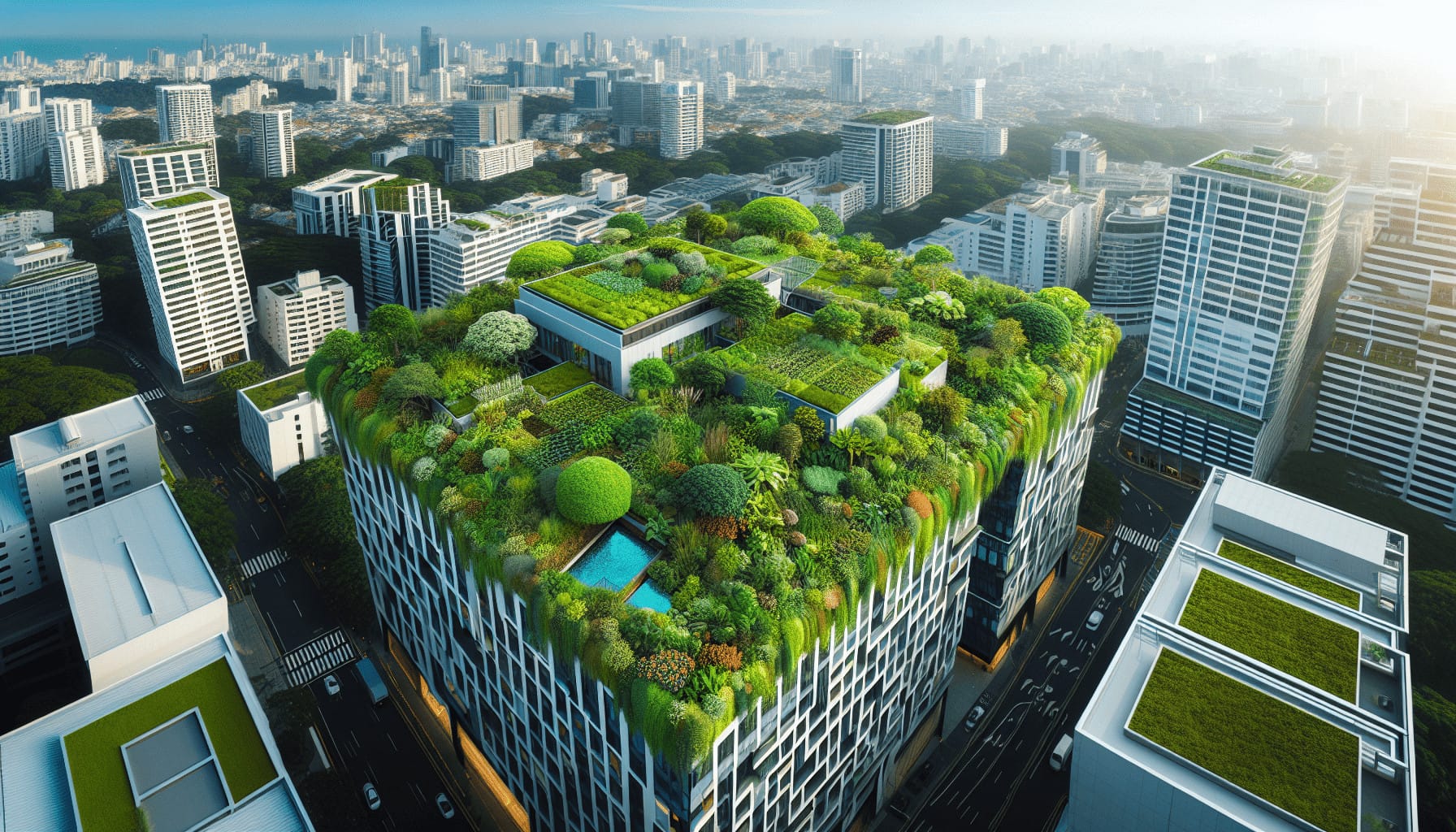Have you ever wondered about the magic of green roofs and the myths that surround them? It’s quite fascinating how these gardens that sit on top of buildings have sparked such curiosity and misunderstanding. Green roofs, with their lush greenery, offer numerous benefits, but they’re often misunderstood. In this article, we aim to unravel some of these myths and misconceptions, providing a clearer picture of what green roofs truly represent.
What is a Green Roof?
A green roof is more than just a roof; it’s a thriving garden that brings nature into the urban environment. These living roofs consist of a vegetation layer planted over a waterproofing system that is installed on top of a flat or slightly sloped roof. They can include an irrigation system, a drainage layer, and sometimes even a root barrier, depending on the design. Green roofs are not only aesthetically pleasing but also environmentally beneficial, contributing to energy efficiency and the reduction of urban heat.
Common Myths and Misconceptions
While green roofs are gaining popularity, several myths persist, causing confusion and hesitance among potential adopters.
Myth 1: Green Roofs are Expensive
Green roofs do require an initial investment that is generally higher than traditional roofs, primarily due to additional layers and planting. However, the cost misconception comes from overlooking long-term savings. Green roofs can significantly reduce heating and cooling costs due to their insulating properties, ultimately resulting in reduced energy bills. Moreover, they can prolong the lifespan of a roof by protecting it from the elements, thereby reducing maintenance and replacement costs over time.
Myth 2: Green Roofs are Heavy
It’s a common belief that green roofs are excessively heavy and unsuitable for most buildings. In reality, there are different types of green roofs, like extensive and intensive systems, that vary in complexity, design, and weight. Extensive green roofs are lighter and suitable for most roof structures, as they require less soil depth and maintenance. Before installation, professionals conduct structural assessments to ensure that the building can support the added weight, thereby managing any concerns related to the load.
Myth 3: Green Roofs are Only for Flat Roofs
While flat roofs are more suited for a green roof installation due to ease of design and maintenance, they’re not the only candidates. Slightly sloped roofs can also accommodate green roofs. Various system designs and modern engineering solutions can adapt green roofs to a range of roof types, offering flexibility in application and spreading the green revolution to more building designs.
Myth 4: Green Roofs Leak
Concerns about water leakage often deter people from considering green roofs. However, when properly installed, green roofs include a high-quality waterproof membrane that effectively prevents leaks. The additional layers of drainage and soil can actually protect the membrane from weather-related wear and tear that traditional roofs experience. Therefore, instead of increasing the risk of leaks, a well-installed green roof can provide greater protection against them.
Myth 5: Green Roofs Require High Maintenance
You might think that maintaining a garden on your roof demands constant attention, but this isn’t true for all green roofs. Extensive green roofs are designed to be low-maintenance, similar to a natural meadow environment. Native or drought-tolerant plants usually featured in these systems require minimal watering and upkeep. Intensive green roofs, akin to ground-level gardens, do need more care, but they’re a choice for those looking to create a lush and versatile rooftop space.
Myth 6: Green Roofs Attract Pests
The idea that green roofs attract pests stems from assuming these spaces are similar to unmanaged wilderness. On the contrary, green roofs, especially extensive ones, are well-managed systems. They can even naturally discourage pests by fostering a balanced ecosystem. Selecting suitable plants and maintaining the plants’ health can mitigate potential pest problems, making pest issues no more significant than those in any garden.

Benefits of Green Roofs
Clearing away misconceptions allows us to focus on the substantial benefits offered by green roofs.
Environmental Benefits
Green roofs contribute significantly to environmental conservation. They help in managing stormwater by absorbing rainwater, which reduces runoff and alleviates urban flooding. They also improve air quality by trapping dust and pollutants while producing oxygen. Moreover, green roofs provide habitats for urban wildlife, supporting biodiversity.
Economic Advantages
Beyond eco-friendly benefits, green roofs offer economic gains. Their insulating properties help stabilize building temperatures, reducing energy consumption for heating and cooling. A green roof also extends the lifespan of the roof structure by shielding it from harmful ultraviolet radiation and harsh weather elements.
Aesthetic and Social Value
There is undeniable aesthetic appeal in turning bare rooftop spaces into green paradises. Apart from enhancing building appearance, green roofs provide pleasant recreational areas and raise property value. They contribute to urban greenery, offering respite from concrete jungles and promoting mental well-being for residents and workers by creating tranquil spaces.
Components of a Green Roof
Understanding the various components that make up a green roof can help you appreciate their complexity and dispel myths about their construction.
Vegetation Layer
This is the most visible layer and consists of selected plant species that are appropriate for the roof environment. Plants are chosen based on climate adaptability, weight, and maintenance needs. Usually, hardy varieties like sedums and grasses are preferred for extensive roofs, while perennials and shrubs may be used in intensive systems.
Growth Medium
The growing medium supports plant life, differing from regular soil to ensure lightweight properties and proper drainage. It often consists of a mix of mineral aggregates, organic matter, and proprietary soil additives. The medium’s depth and composition depend on the desired vegetation, structural capacity, and performance goals of the green roof.
Drainage and Root Barrier Layers
The drainage layer promotes excess water flow away from the roof, preventing the growth medium from becoming waterlogged. Coupled with a root barrier, these layers ensure vegetation roots do not penetrate and damage the waterproof membrane beneath.
Waterproof Membrane
This essential layer safeguards the roof by preventing water from seeping into the building. Merging durability with flexibility, the membrane is typically made from materials like PVC, EPDM, or TPO, each offering unique benefits for different applications.

Future of Green Roofs
Green roofs are more than a trend; they are becoming integral to sustainable urban design strategies worldwide. As cities face increasing environmental challenges, green roofs offer a viable solution to mitigate urban heat islands, manage stormwater, and enhance biodiversity. Their potential extends beyond individual buildings to contribute to broader city planning and policy initiatives aimed at improving urban living conditions.
Technological Advances
Innovations in materials and construction methods are paving the way for more efficient and resilient green roof systems. Advanced waterproof membranes, smarter drainage solutions, and new plant varieties designed specifically for rooftops are making green roofs more accessible and effective.
Integration with Urban Planning
Green roofs are becoming a focal point in urban planning. Cities around the world are starting to include them in building regulations, offering incentives to developers who incorporate green roofs into their projects. This shift signifies recognition of their value not just for individual buildings but for wider urban sustainability efforts.
The Verdict on Green Roof Myths
Dispelling myths about green roofs is essential to advancing their adoption and understanding their true value. While green roofs may introduce unique considerations and challenges, they also offer substantial advantages that outweigh the misconceptions. Whether it’s the environmental, economic, or social benefits, green roofs present a compelling case for integration into modern building practices. By embracing accurate information and innovative approaches, we can create more sustainable, beautiful urban landscapes.
In the end, it’s about choosing to see rooftops not just as barriers from nature, but as opportunities to bring nature closer to our daily lives, fostering a harmonious balance between architecture and the environment. So, the next time you think about green roofs, think of them not as a myth to be wary of, but as a living, thriving reality.
